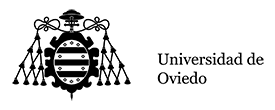Estudia
- Artes y humanidades
- Ciencias
- Ciencias de la salud
- Ciencias sociales y jurídicas
-
Ingeniería y arquitectura
- Doble Máster Universitario en Ingeniería Industrial e Ingeniería Energética
- Máster Erasmus Mundus en Ingeniería Mecatrónica
- Máster Universitario Erasmus Mundus en Tecnología y Gestión para la Economía Circular
- Máster Erasmus Mundus en Transporte Sostenible y Sistemas Eléctricos de Potencia
- Máster Universitario en Ciencia y Tecnología de Materiales
- Máster Universitario en Conversión de Energía Eléctrica y Sistemas de Potencia
- Máster Universitario en Conversión de Energía Eléctrica y Sistemas de Potencia (Plan antiguo)
- Máster Universitario en Dirección de Proyectos
- Máster Universitario en Geotecnología y Desarrollo de Proyectos SIG
- Máster Universitario en Ingeniería de Automatización e Informática Industrial
- Máster Universitario en Ingeniería de Caminos, Canales y Puertos
- Máster Universitario en Ingeniería de Minas
- Máster Universitario en Ingeniería de Telecomunicación
- Máster Universitario en Ingeniería Energética
- Máster Universitario en Ingeniería Industrial
- Máster Universitario en Ingeniería Informática
- Máster Universitario en Ingeniería Mecatrónica
- Máster Universitario en Ingeniería Química
- Máster Universitario en Ingeniería Web (nuevo-implantación en curso 2024-25)
- Máster Universitario en Ingeniería Web (En Extinción)
- Máster Universitario en Integridad y Durabilidad de Materiales, Componentes y Estructuras
- Máster Universitario en Náutica y Gestión del Transporte Marítimo
- Máster Universitario en Tecnologías Marinas y Mantenimiento
- Máster Universitario en Prevención de Riesgos Laborales
- Información, acceso y becas
Tecnología de Emulsiones y Suspensiones
- Clases Expositivas (17 Hours)
- Tutorías Grupales (2 Hours)
- Prácticas de Laboratorio (10 Hours)
- Prácticas de Aula/Semina (5 Hours)
The Emulsions and Suspensions Technology subject is part of the Process and Product Engineering Module of the 1st Year of the Master's Degree in Chemical Engineering at the University of Oviedo. It is an optional subject corresponding to the second semester of said first year. The subject is taught by professors from the Chemical Engineering area of the Department of Chemical Engineering and Environmental Technology of the University of Oviedo.
It is a subject that allows completing the training of future graduates, adding knowledge about the pillars on which the design of operations in which emulsions, suspensions and colloidal systems are processed. These operations occur in various types of industries, but mainly in those that belong to the food, pharmaceutical and cosmetic industries. The most recent applications correspond to its use in clinical analysis.
The main objective of the course is that students have a good knowledge of the theoretical bases of emulsion and suspension technology.
The only requirements are those of obligatory fulfillment for admission to the Master in Chemical Engineering. However, although throughout the explanation of the subject, an attempt is made to review the basic concepts necessary for the understanding and learning of the subject, it is recommended, for a better use of the subject, that the student has clear concepts about equations. basics of heat transfer and mass transfer.
The skills that will be worked on in this course are:
General skills
CG1 Ability to apply the scientific method and the principles of engineering and economics, to formulate and solve complex problems in processes, equipment, facilities and services, in which matter undergoes changes in its composition, state or energy content, characteristic of the industry chemistry and other related sectors, including pharmaceuticals, biotechnology, materials, energy, food and the environment.
CG2 Conceive, project, calculate, and design processes, equipment, industrial facilities, and services, in the field of chemical engineering and related industrial sectors, in terms of quality, safety, economy, rational and efficient use of natural resources, and environmental conservation. atmosphere
CG4 Carry out the appropriate research, undertake the design and direct the development of engineering solutions, in new or little-known environments, relating creativity, originality, innovation and technology transfer.
CG5 Knowing how to establish mathematical models and develop them through appropriate computing, as a scientific and technological basis for the design of new products, processes, systems and services, and for the optimization of others already developed.
CG6 Have the capacity for analysis and synthesis for the continuous progress of products, processes, systems and services using criteria of safety, economic viability, quality and environmental management.
CG10 Adapt to changes, being able to apply new and advanced technologies and other relevant developments, with initiative and an entrepreneurial spirit.
Specific skills
COPP1 Apply knowledge of mathematics, physics, chemistry, biology and other natural sciences, obtained through study, experience, and practice, with critical reasoning to establish economically viable solutions to technical problems.
COPP2 Design products, processes, systems and services for the chemical industry, as well as the optimization of others already developed, taking as a technological base the various areas of chemical engineering, including processes and transport phenomena, separation operations and reaction engineering. chemical, nuclear, electrochemical and biochemical.
COPP3 Conceptualize engineering models, apply innovative methods in solving problems and appropriate computer applications for the design, simulation, optimization and control of processes and systems.
COPP4 Have the ability to solve problems that are unfamiliar, incompletely defined, and have competing specifications, considering possible solution methods, including the most innovative, selecting the most appropriate, and being able to correct implementation in practice, evaluating different design solutions .
These competencies are specified in the following learning outcomes:
RA1: Understand and explain the interfacial phenomena present in polyphase systems.
RA2: Identify the fundamental characteristics of surfactants, emulsions, suspensions and other colloidal systems, as as its main industrial applications.
RA3: Explain the behavior of different emulsions and suspensions in certain processes, based on stability data and their interfacial properties.
RA4: Explain, select and propose the appropriate technological processes for the treatment and management of emulsions and suspensions.
The contents of the subject Technology of emulsions and suspensions have been organized according to the following topics:
1 Interfacial phenomena in polyphase systems.
2 Surfactants: types and applications.
3 Emulsions: fundamentals, stability, formulation and properties.
4 Suspensions: fundamentals, stability, formulation and properties.
5 Other colloidal systems
6 Industrial applications of emulsions and suspensions.
7 Environmental problems of residual emulsions and suspensions.
Experiment 1 Preparation of colloidal systems using surfactants.
Experiment 2 Preparation of emulsions
Experiment 3 Preparation of suspensions
Methodology and Work Plan:
In order to rationalize the teaching organization of the subject, its contents have been distributed according to the following typology of teaching modalities:
Lectures: 2:00 p.m. Classroom practices/Seminars: 5 h. Laboratory practices: 10 h. Group tutorials: 2 h. Evaluation sessions: 3 h.
Autonomous work: 22 h Group work: 56.5 h
Students will have at their disposal a copy of the graphic material that will be used in face-to-face classes as well as proposed cases that will be addressed.
The expositive classes are dedicated to theoretical or practical activities given in a fundamentally expository way by the teacher, supported by graphic material. The practical classes in the classroom are dedicated to theoretical discussion activities and, preferably, to practical activities that require a high level of student participation.
In this subject, activities outside the classroom can also be carried out, such as visits to companies, research centers, attendance at seminars, etc. In each academic year, students will be informed of the planning of said activities well in advance.
Student Learning Assessment: The value of each of the evaluation systems in both ordinary and extraordinary calls, expressed as a percentage, will be as follows:
Evaluation systems Learning outcomes Percentage
Evaluation of Classroom Practices, Laboratory Practices and Group Tutorials All 50%
Final evaluation All 50%
Conditions:
Classroom Practices, Laboratory Practices and Group Tutorials: Attendance to Classroom Practices, Laboratory Practices and Group Tutorials is mandatory, although, in duly justified cases, attendance greater than 80% will be valid. Active participation and work done by each student will be taken into account. 50% of the student's final grade will correspond to the assessment of these aspects.
Final evaluation: At the end of the course there will be a written exam to verify mastery of the subjects corresponding to the course, consisting of the answer to questions of a theoretical or theoretical-practical nature that may be made up of different sections and that may also have the format of test. 50% of the student's final grade will correspond to the mark obtained in the exam.
To pass the subject in the May-June call, the final grade will be calculated with the mark obtained in the Classroom Practices, Laboratory Practices and Group Tutorials and the mark obtained in the final evaluation corresponding to the call, taking into account the weighting percentages indicated for each one of them in the previous table. The final evaluation grade may not be less than 40% of its maximum value. If these conditions are met, the final grade will be calculated taking into account the weighting percentages indicated in the previous table.
For all the other calls of the academic year, the final grade will be calculated with the mark obtained in the Classroom Practices, Laboratory Practices and Group Tutorials and the mark obtained in the final evaluation corresponding to the call, taking into account the indicated weighting percentages. for each of them in the previous table. The minimum percentages corresponding to the final evaluation, indicated above, will also apply. In case of not having a note in the Classroom Practices and Group Tutorials, for not having attended at the time, a zero will be assigned in that section in all these calls.
If the student takes the extraordinary calls prior to the semester in which the subject is usually taught, the final grade will be calculated with the mark obtained in the Classroom Practices, Laboratory Practices and Group Tutorials of the immediately preceding academic year in the that the subject was taught and the mark obtained in the final evaluation corresponding to the extraordinary call, taking into account the weighting percentages indicated for each one of them in the previous table. In case of not having a note in the Classroom Practices and Group Tutorials, for not having attended at the time, a zero will be assigned in that section in all these calls.
Graphic material will be used that will be available to students in advance. Consultation of the specialized bibliography available through the network of libraries of the University of Oviedo (BUO), located especially in the Faculty of Chemistry, as well as online resources (electronic publications and databases) will be encouraged.
1. Salager, J.L., Formulación, Composición y Fabricación de Emulsiones para Obtener las Propiedades Deseadas. Estado del Arte. Parte A, Introducción y Conceptos de Formulación Físico-Química, Cuaderno FIRP S747, Universidad de los Andes, M??rida, Venezuela (1999)
2. Rosen, M.J., Surfactants and Interfacial Phenomena, 3rd edition, John Wiley Sons, Inc., Hoboken, NJ, USA (2004)
3. Holmberg, K. Jonsson, B.; Kronberg, B.; Lindman, B., Surfactants and Polymers in Aqueous Solutions, John Wiley & Sons, Inc., Chichester, England (2003)
4. M. Matos, D. Pando, G. Gutiérrez, Nanoencpasulation of Food Ingredients by Niosomes, In Lipid Base Nanoestructures for Food fortification purpose ISBN: 978-0-12-815673-5, Elsevier Academic Press, (Ed. Seid Mahdi Jafari) (2019), capítulo 11, Páginas: 447-481
5. M. Matos, R. Díaz, A. Marefati, M. Rayner, G. Gutiérrez, Encapsulation of antioxidants using double emulsions in Food Bioactive Ingredients, (Ed. MohammadAli Aboudzadeh). (2021) Capitulo 7, ISBN13 9783030620516. Springer
6. M. Matos, S. Luque, G. Gutiérrez. Formulación y estabilidad de emulsiones para encapsulación de biocompuestos. Anales de Química, 116, 69-80, 2020
7. G. Gutiérrez, M. Matos, C. Pazos. Simple emulsión. Enciclopedia of Membranes, Springer (Eds Enrico Drioli y Lidietta Giorno), 2014, ISBN: 978-3-662-44323-1
8. M. Matos, G. Gutiérrez, C. Pazos. Membrane emulsification and chemical applications. Enciclopedia of Membranes Springer (Eds Enrico Drioli y Lidietta Giorno), 2014, ISBN: 978-3-662-44323-1

